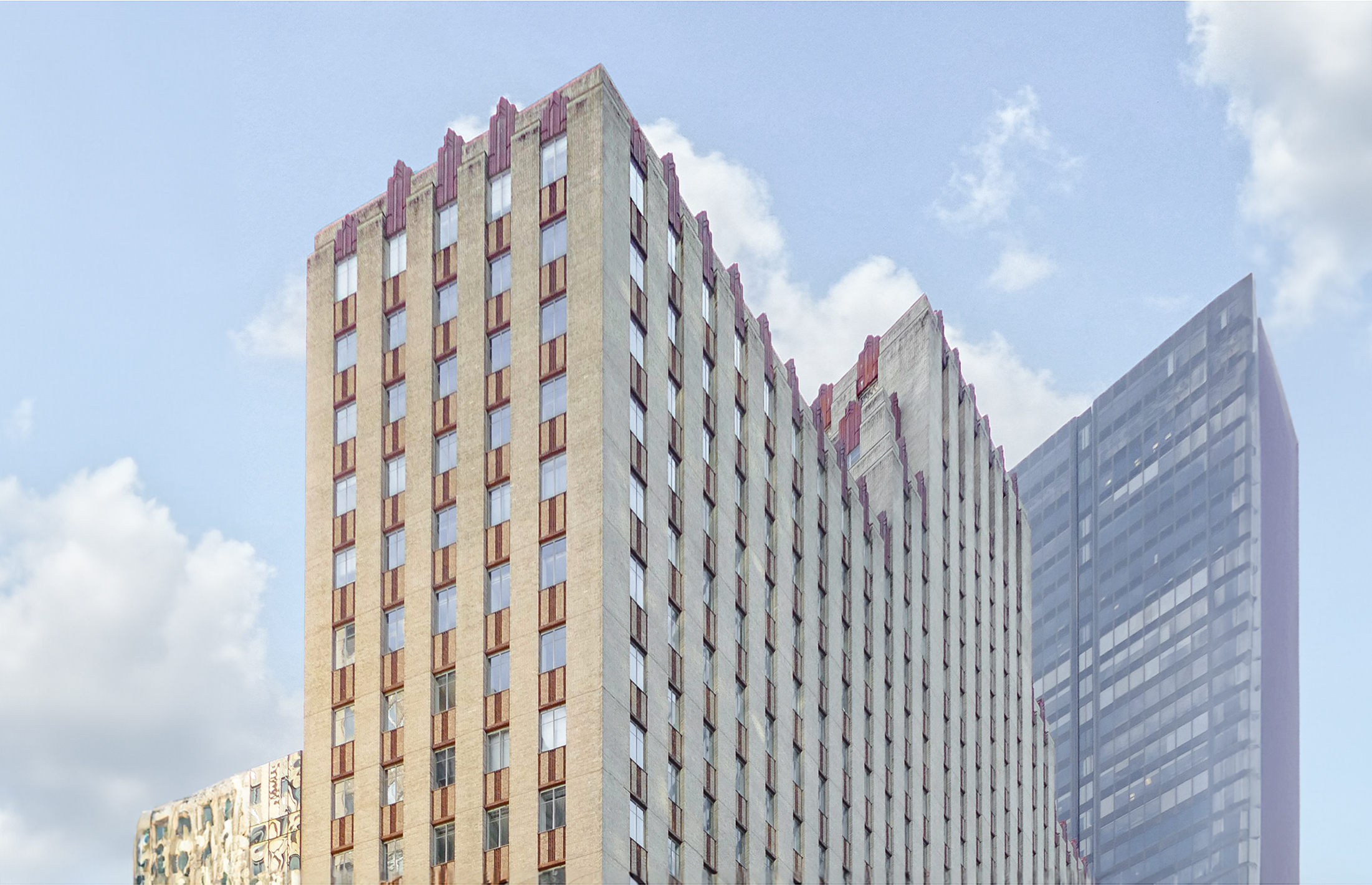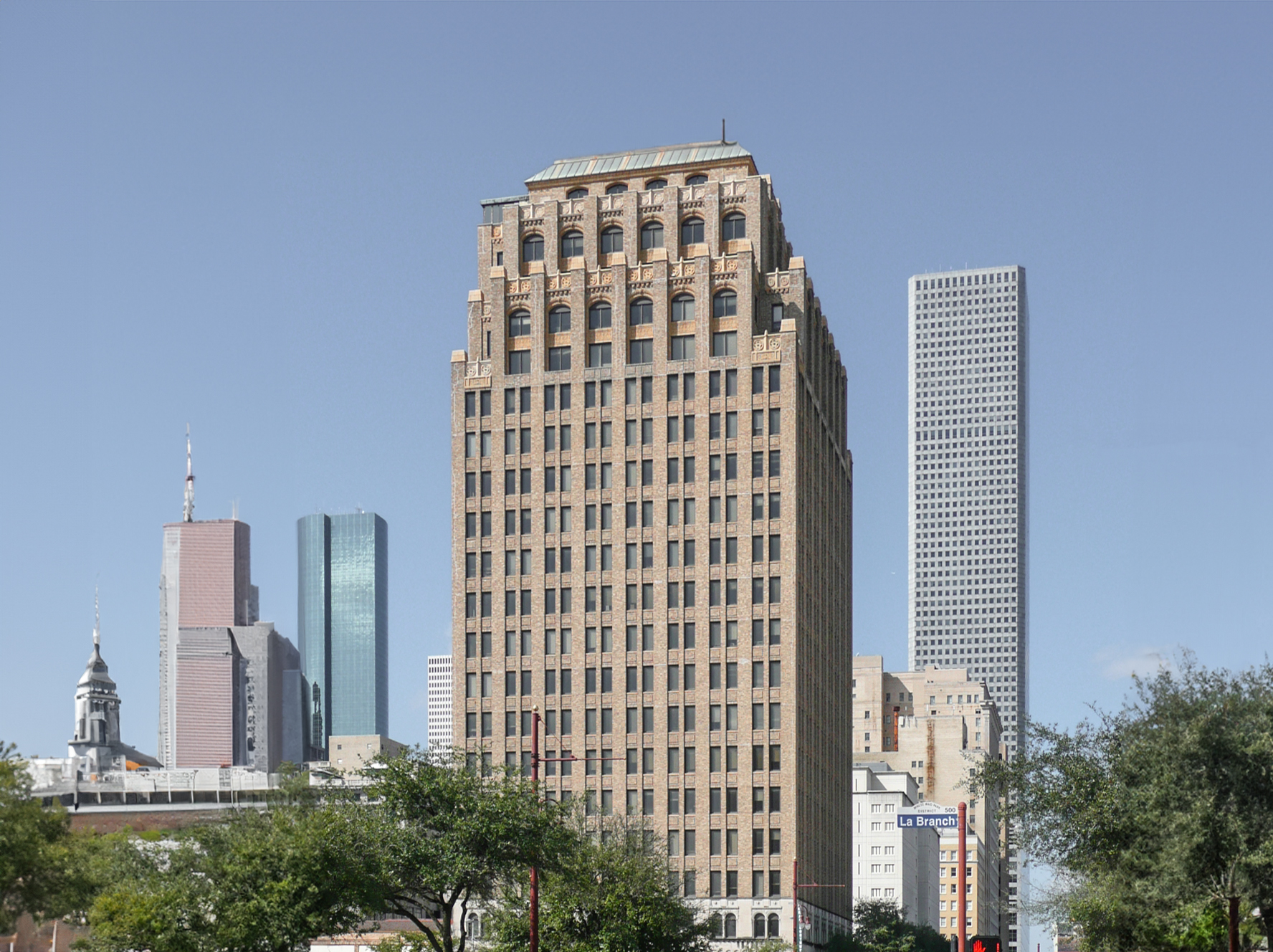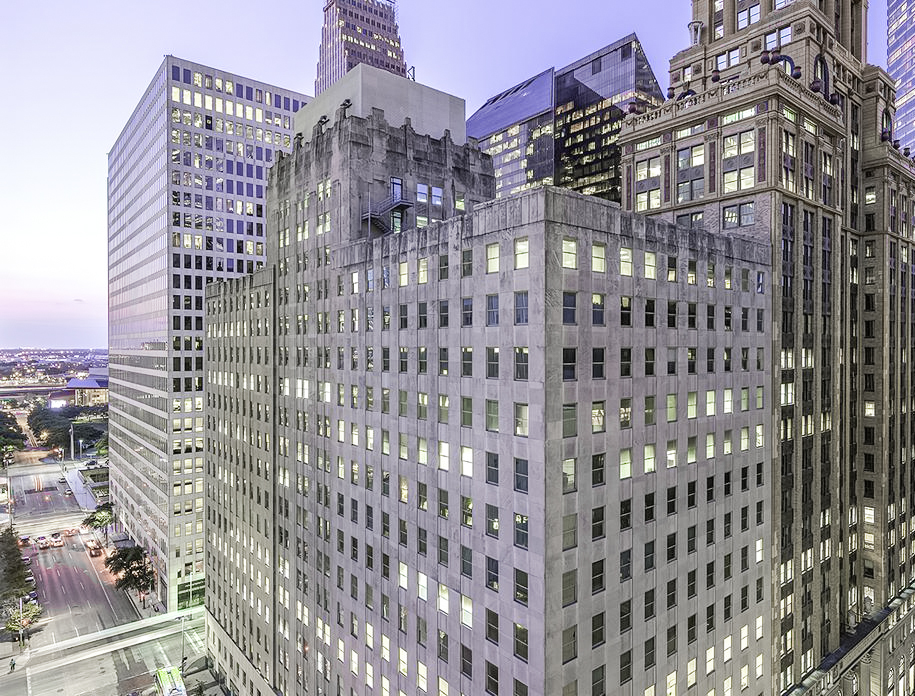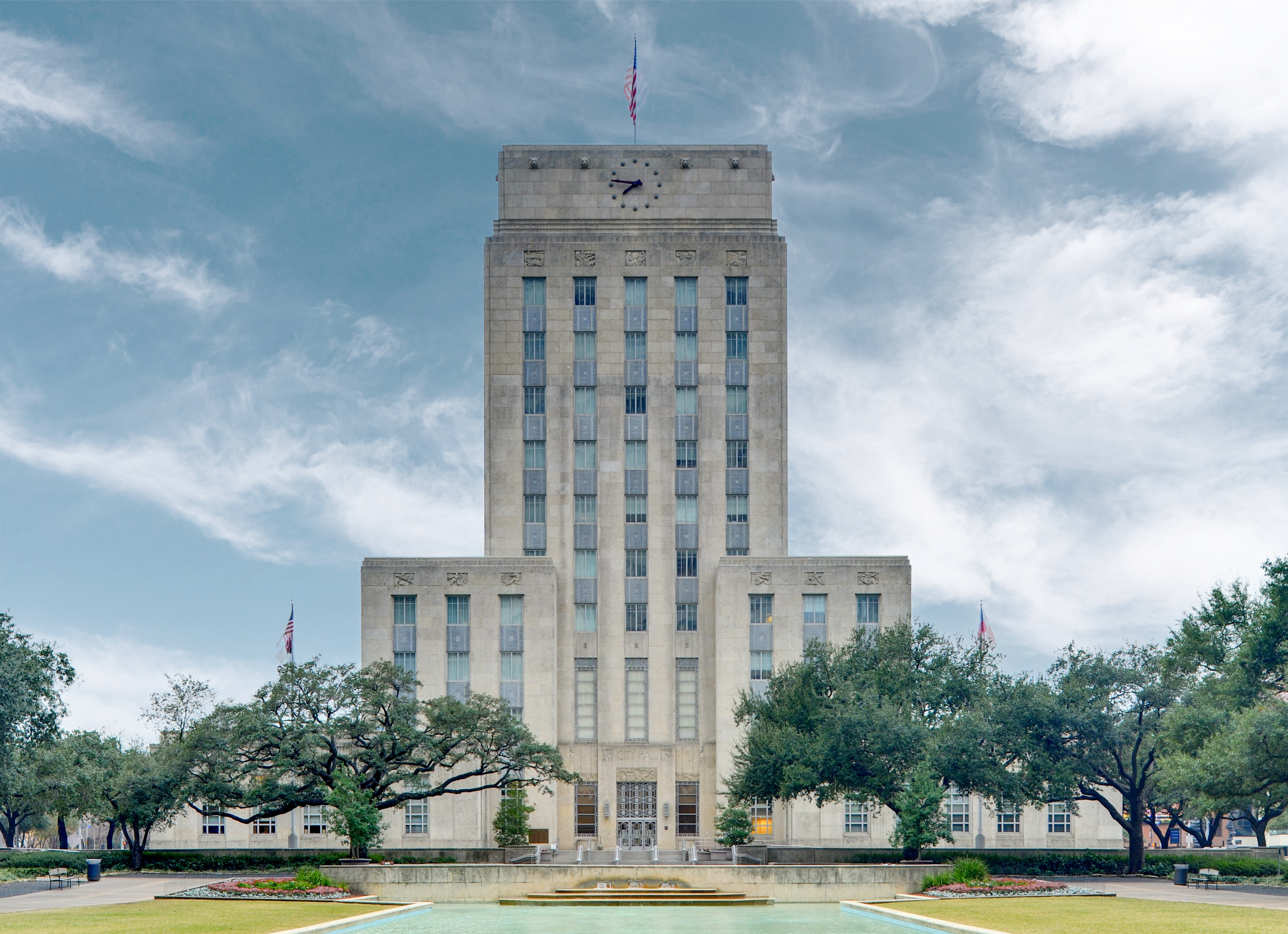The City National Bank Building is an Art-deco skyscraper designed in 1939 by Alfred C. Finn, and built between 1946 and 1947 in Houston, TX.
City National Bank Building is not the only name you might know this building by though. It is common for companies to want to attach their names to iconic buildings when they move in, or for the general public to come up with nicknames, and this one is no exception. The City National Bank Building is also known, or has been known as, Texas American Building, or 1001 McKinney Building.
Its precise street address is 1001 McKinney Ave, Houston, TX. You can also find it on the map here.
The City National Bank Building is a structure of significant importance both for the city of Houston and the United States as a nation. The building embodies the distinctive characteristic features of the time in which it was built and the Art Deco style. Because of that, the City National Bank Building was officially declared as a national landmark on June 20th 1996, and was included in the National Register of Historic Places on February 23rd 2000.
The building has been restored 2 times over the years to ensure its conservation and adaptation to the pass of time. The main restoration works happened in 1999 and 2020.





